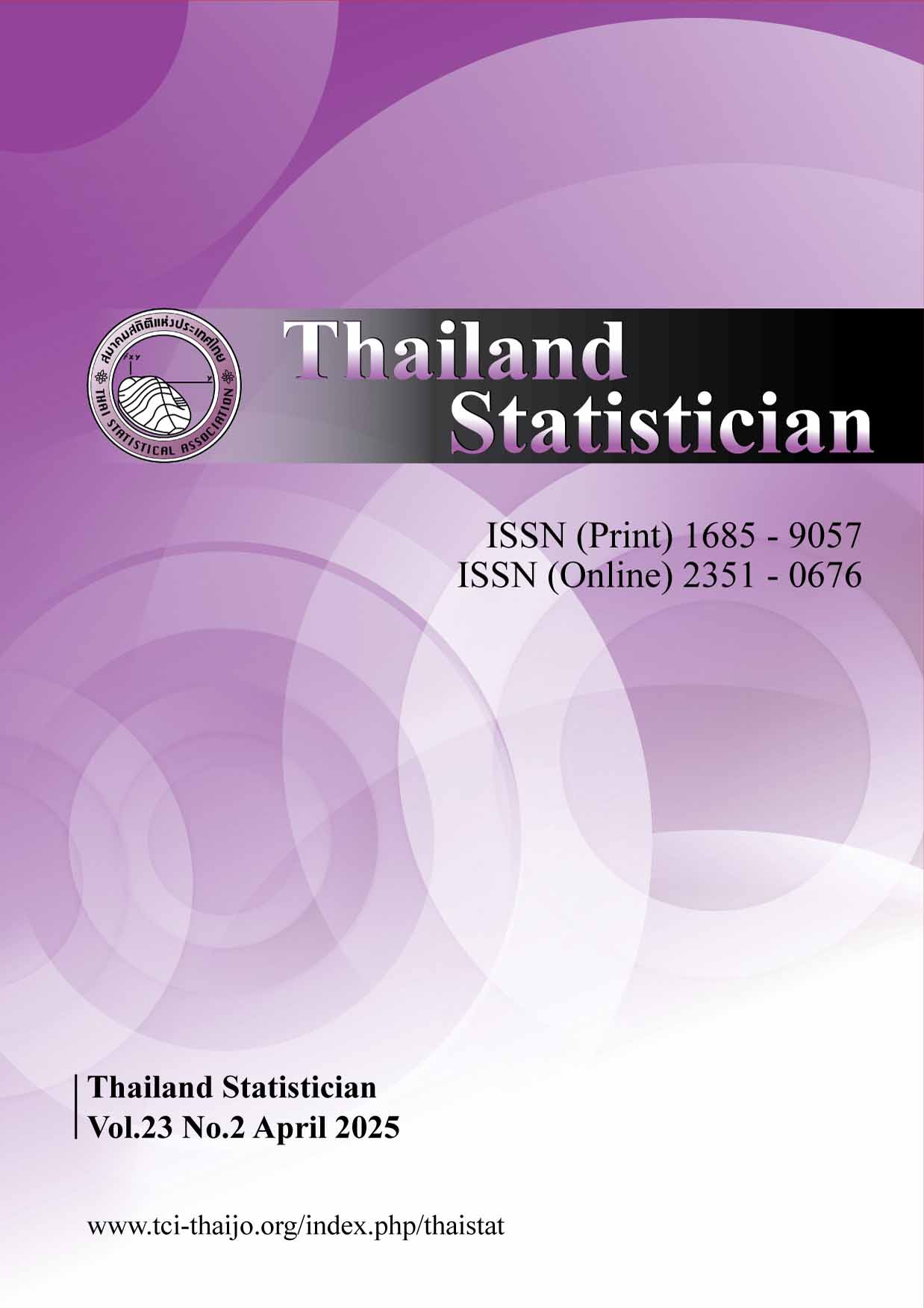Akaike Information Criterion for a Simultaneous Equations Model using Unbiased Estimator
Keywords:
Model selection criterion, performance, simultaneous equations model, unbiased estimator, maximum likelihood estimatorAbstract
This article introduces a novel approach in the fields of econometrics and statistics. A new criterion for selection in a simultaneous equation model (SEM) based on the Akaike information criterion using an unbiased estimator (UE) called SAIC(UE). This innovative method replaces the traditional maximum likelihood estimator (MLE) with UE, offering a fresh perspective on model selection. A comparison of the effectiveness of SAIC(UE) with SAIC (Keerativibool et al. 2011) by the extensive simulation study and the observed L2 performance found that SAIC(UE) is the best criterion because it had the maximum percentage of correct model selections, the maximum average of the observed L2 performance, and the minimum standard deviation of the observed L2 performance in all situations of the simulation study. SAIC has a more negative bias than SAIC(UE) because the contemporaneous covariance matrix of error terms obtained from MLE is smaller than that obtained from UE or underestimated. This reason causes the correct order of the model from SAIC to be less than SAIC(UE).
References
This article introduces a novel approach in the fields of econometrics and statistics. A new criterion for selection in a simultaneous equation model (SEM) based on the Akaike information criterion using an unbiased estimator (UE) called SAIC(UE). This innovative method replaces the traditional maximum likelihood estimator (MLE) with UE, offering a fresh perspective on model selection. A comparison of the effectiveness of SAIC(UE) with SAIC (Keerativibool et al. 2011) by the extensive simulation study and the observed L2 performance found that SAIC(UE) is the best criterion because it had the maximum percentage of correct model selections, the maximum average of the observed L2 performance, and the minimum standard deviation of the observed L2 performance in all situations of the simulation study. SAIC has a more negative bias than SAIC(UE) because the contemporaneous covariance matrix of error terms obtained from MLE is smaller than that obtained from UE or underestimated. This reason causes the correct order of the model from SAIC to be less than SAIC(UE).
Downloads
Published
How to Cite
Issue
Section
License

This work is licensed under a Creative Commons Attribution-NonCommercial-NoDerivatives 4.0 International License.



